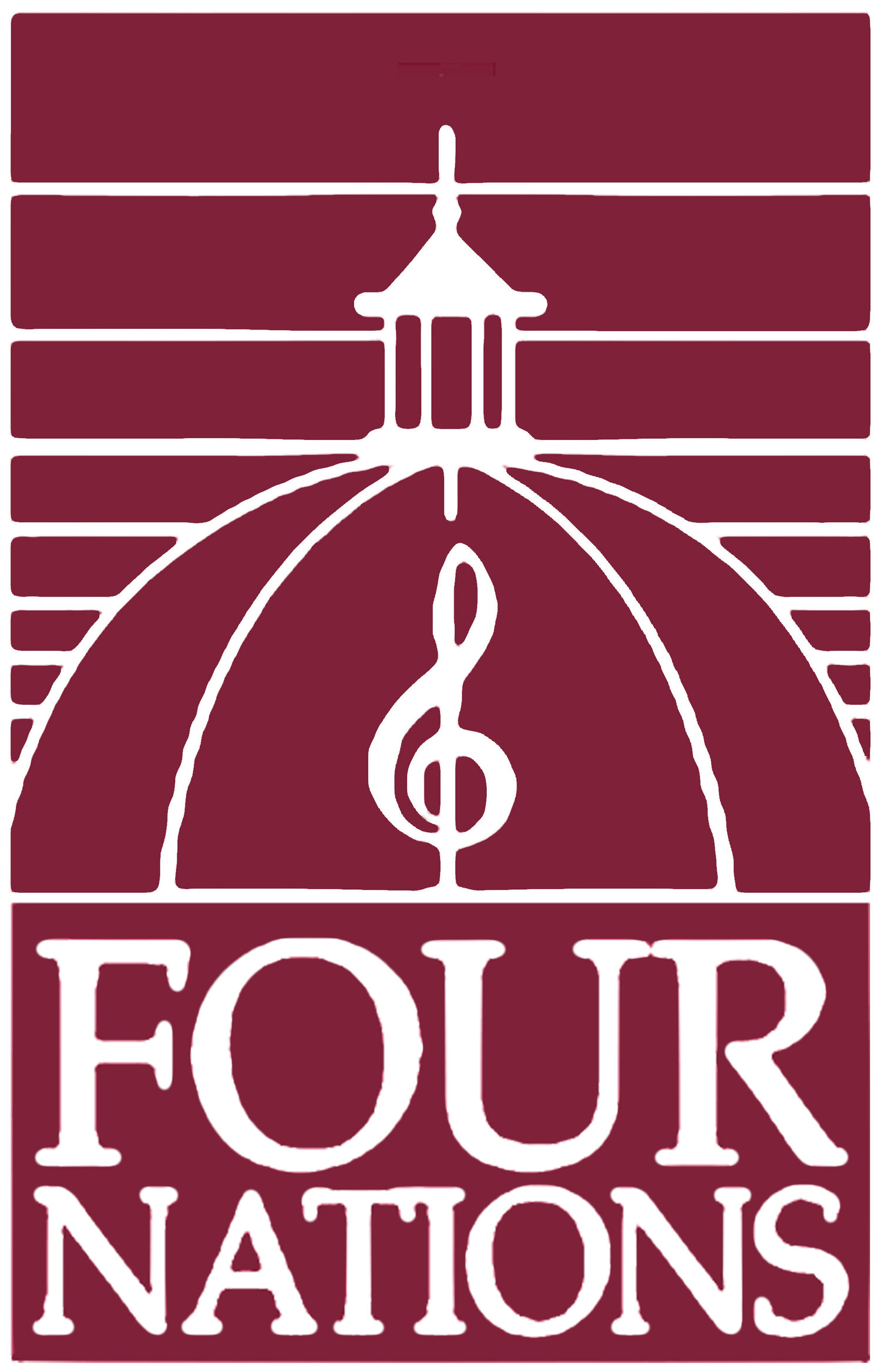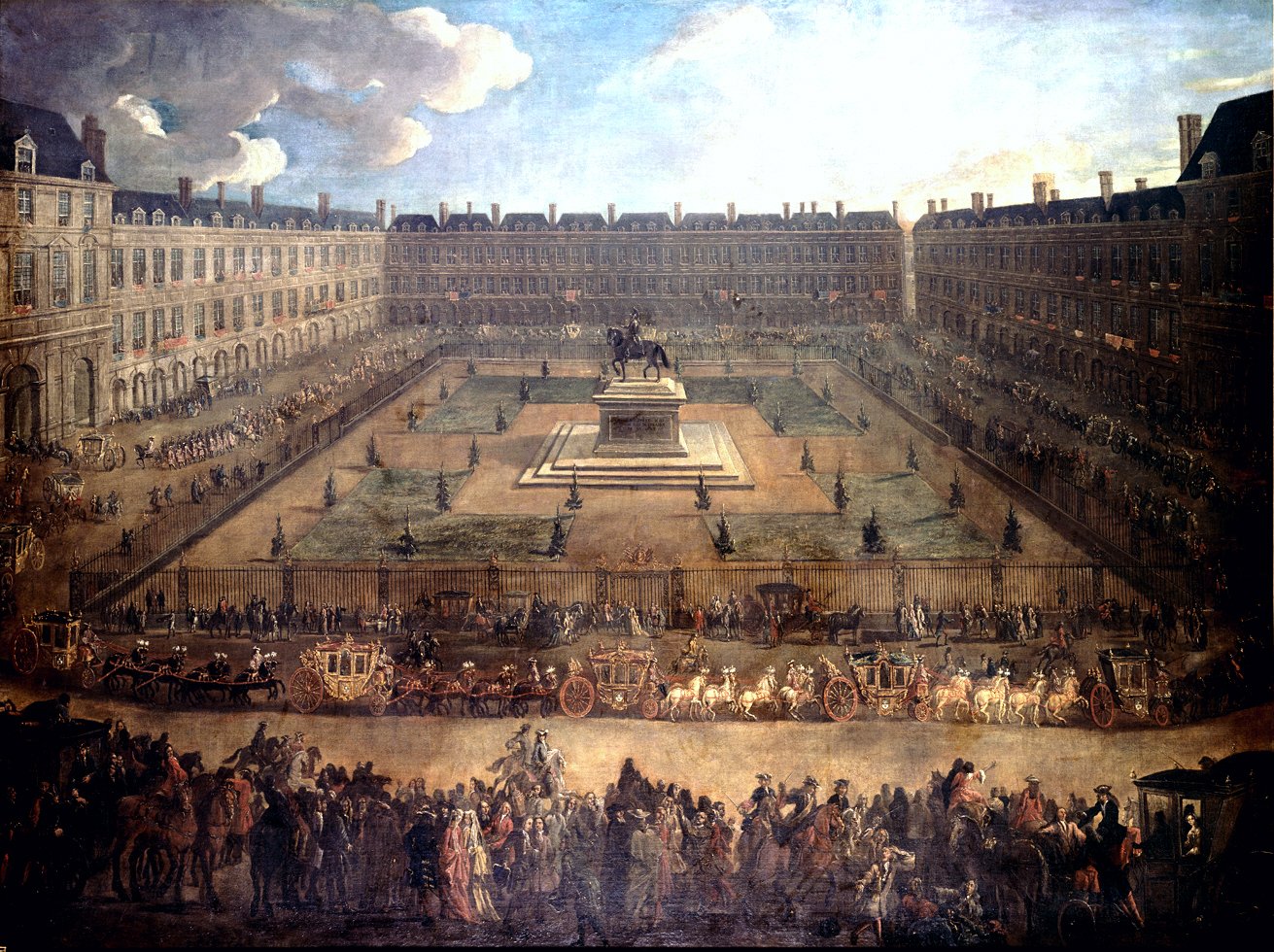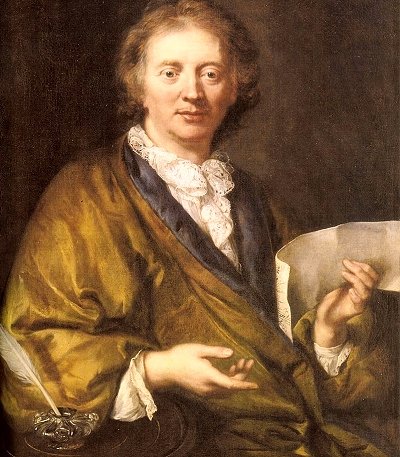The Masters of Regency Paris
The Four Nations Ensemble
Thursday, May 4, 2023, 7:30 PM
Church of the Heavenly Rest
Place Royale, now Place des Vosges, in 1709.
THE ARTISTS
Pascale Beaudin, soprano
David Ross, flute
Chloe Fedor, violin
Keiran Campbell, cello
Scott Pauley, lute
Andrew Appel, harpsichord
THE PROGRAM
J.-B. Barrière--Sonata II for cello in F# minor, Book 2
M. Blavet--Sonata II for flute in D minor, Opus 2
J. M. Leclair --Sonata for violin in A minor Opus 9 # 5
F. Couperin--Pièces de Clavecin Sixieme Ordre Book 2
L. N. Clérambault--Medée Cantata for soprano
PARIS in 1700
In 1700, Paris and the neighboring palace of Versailles were in a process of transformation. From the mid 17th century, Louis XIV had made his court into a brilliant center of social life and the creative arts bringing all that was new and inspiring to the palace. The nobility moved from their private homes in the city to apartments at Court. Living anywhere else was a humiliation. French royal culture and language had become the lingua franca throughout Europe. But by 1700 there was deterioration. The kingdom was in economic decline with the expenses of ill-advised wars. Louis was suffering from physical ailments and a crisis of guilt encouraged by his dull, overly devout wife. Lully, Racine, Moliere were dead. The court had turned from shimmer to stagnation and bored courtiers were fleeing to Paris.
In 1700 Corelli published his Opus V of solo violin sonatas. These quintessentially Italian works of modern music engaged every worthy French composer. Demi-monde concerts were held to contradict decades of musical traditions, and music became politics. People took sides, Italian or French. The new lingua was to be heard from the hands of violinists and on the pages of sonatas.
Yet Les Grands, the great composers on our program, integrated tradition with innovation and courtly elegance with public display, and left a vast treasury of uniquely beautiful music.
Francois Couperin Le Grand
There is a quality, a finesse, to Francois Couperin’s music that makes itself felt when approaching any one of his pieces de claveçin, no matter how extended or succinct. In the process of learning a work we come across a particular note, a subtle dissonance, an unexpected turn of phrase, or a delay or anticipation that reveals sentiment and gentle power. A brief minuet with this ability to engage a detail is never pedestrian. Couperin is never common. Even when petit, he is “Le Grand.”
During his lifetime few composers had the courage to be compared to Couperin. From 1713, the year Couperin published his first book of harpsichord pieces, until his death in 1733 only three or four composers, including Rameau, dared to bring their harpsichord music to the public eye. The year following Couperin’s death saw fifty composers engraving and presenting their works for public scrutiny.
Couperin’s first book of harpsichord pieces serves as a retrospective collection. He was 40 years old, had been composing works for keyboard for over two decades, and he compiled very long suites for publication. All but one suite or ordre as he called them begins with an allemande grave, an extended Baroque work. They are like history paintings in sound, large canvases with contrasting moments ranging from dark and disturbing to luminous and graceful. He follows these allemandes with the expected procession of courantes, sarabandes, gavottes, and gigues, closely following a tradition of the French classical suite. But while he displays his roots in the earlier works of Marchand, d’Anglebert, and LeRoux, he presents pieces in a new style. He seems to invent the French Rococo. He embroiders music that speaks to us as does a fine painting, or a beautifully written fable. We now call these works genre pieces. They are masterworks of wit, sentiment, and evocation. They prefigure Debussy’s préludes of interrupted serenades and flaxen haired girls.
Though it is inaccurate to distill his music into only one quality or another, Couperin is a sensualist and finds his palate in the harpsichord. His ability to make the instrument beautiful is akin to the magical gardens and landscapes of Watteau and Fragonard, and the textures of a copper jug or group of strawberries on a Chardin canvas.
But what I find so moving in Couperin’s music is a struggle between passion and poise. Under the surface of perfect courtesy and elegance lurk heartache, longing, or rude observation, cartoon satire, and joyful laughter. At some moments we expect that a work will explode from uncontrollable feeling. It never does. This struggle is both noble in its best meaning, and rich in sentiment.
Jean-Marie Leclair
The dangers of seduction
There is no evidence to suggest that we would enjoy spending an evening with Jean-Marie Leclair, even though he seduces us with each violin sonata. His (second) marriage to Louise Roussel, one of the finest engravers of music, ended in acrimonious divorce. Some have suggested that his murder, in front of his home in a rough neighborhood of Paris, may have been instigated by Louise. His volumes of violin sonatas and chamber works include prefaces with important clues to performing his difficult works. However, with his instruction comes insult. He seems to belittle the curious reader as he offers his performing guidelines. He would never accept sharing power or fame with others and retreated from certain concert stages if it was not understood that he alone was the undisputed star.
In retrospect, looking at the many virtuosi who thrilled the Parisian population of concert attendees or fans, there is no other violinist composer with so magical a wand (bow) to measure up to Leclair. For him, the violin is a storehouse of color to weave a spell, to seduce. It is true that 18th century France was a center of Paganinis, including Guignon, Mondonville, and Guillemain. None of them combined instrumental prowess with so brilliant a compositional imagination and control. Leclair is a great composer.
When reading Pierre Choderlos de Laclos’ Les Liaisons Dangereuses, the canonic novel of depravity, we are horrified by the criminal lack of morals of its main characters all the while being misled and beguiled by their sophisticated wit. We devour their dishonesty and manipulation. In some ways, Leclair using his violin leads us into a world of perils. There is the devil in his music and we willingly dance to his spells.
Jean-Baptiste Barriere
The Gamba is dead
Long live the Cello
On listening to Barrière’s cello sonatas we feast in his rich chords, the continuous stream of “double stops.” This all falls into place when we remember that he began his too short career as a viol player. The viol saw its peak in the solo works of Marais and Forqueray, works characterized with large chords and fine, detailed ornamentation. But the early 18th century saw the demise of the viol in favor of the Italian cello and Barrière led the way with sonatas for the newer instrument that, like Leclair’s, continue to challenge today’s cellists.
At the end of his life, asked if he regretted anything unaccomplished, Rameau said that he should have spent more time in Italy. Barrière traveled to study with Franciscello, Italy’s most renowned virtuoso cellist. Barrière’s music combines the classical nobility of a Marais tombeau or sarabande with the fleet lyricism of Naples and Venice.
Michel Blavet
Of the few “friends” of Leclair, Blavet seems to have walked comfortably alongside Jean-Marie. All evidence in this case suggests that we might have wanted a weekly evening with the flautist. Leclair wrote several sonatas with Blavet in mind, Telemann knew and admired his playing, Quantz spoke as highly of him as any musician in Europe.
Blavet, as all French composers, was inspired by Italian music, particularly Vivaldi. Blavet’s virtuosity is a mélange of florid French ornaments (agréments) and Italian fire. He wrote the earliest French version of a Venetian style concerto and his sonatas incorporate the lyricism of Corelli’s adagios and andantes. Yet, the flute is a quintessentially French instrument and Blavet melds the qualities of courtly songs and dances with sonatas from Rome.
Clérambault's Medée
In a society shielded from overbearing passions, Medea is the most threatening of villains. The court relies on the participants’ ability to control and camouflage anger, despair, joy and need. Medea, who invades operas of Lully and Charpentier and in this, Clérambault’s most exciting cantata, is Versailles’ nightmare. She rocks boats, stamps in the garden, and ultimately burns down the palace.
Clérambault published volumes of Cantates Françoises. Inspired by the passionate chamber cantatas coming from Italy, he adopted this form of miniature opera while transforming the works to support French language and classical ideals with roots in Racine and Corneille. Musical soliloquies are kin to moments from Phedre or Berenice. Incantations (so often to demons below) are extended and distorted. Laments are in the form of ancient airs de cours and explosions of fury adopt the Italian da capo aria found throughout Alessandro Scarlatti’s cantatas. Yet Clérambault is rarely literal in his adoption of Italian models and alters the structure of his arias to keep them novel and spontaneous.
Though his cantatas were printed as chamber works, many of them were expanded to be performed at Les Concerts Spirituel, Paris’ first public concert series. In this way, Clérambault, the favorite composer of Madame de Maintenon, bridged a gap between the courtly salon and the public stage at a time when music was migrating. The old guilt ridden King and his dull wife asked Clérambault to abandon mythologies for biblical stories and placed the composer in charge of the musical education of girls at the school of St. Cyr. Yet the public wanted the colorful exhibitionism of Leclair, the novelty of the cello, and the fire and fury of Medea.
Les Grands have left us a repertory of works to satisfy the melancholy King in 1700 as well as the dynamic and wealthy tradesman from that moment until today.
Andrew Appel
Craryville, NY
April 2023






